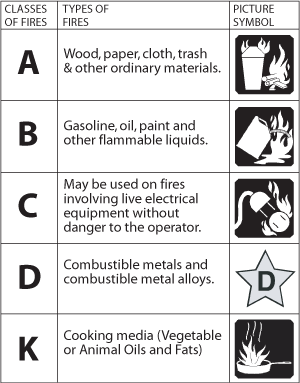As part of the carbon cycle known as photosynthesis, plants, algae, and cyanobacteria absorb carbon dioxide, light, and water to produce carbohydrate energy for themselves and oxygen as a waste product. But in darkness photosynthesis cannot occur, and during the resultant respiration small amounts of carbon dioxide are produced. Carbon dioxide also is a by-product of combustion; emitted from volcanoes, hot springs, and geysers; and freed from carbonate rocks by dissolution.
Before the advent of human-caused release of carbon dioxide to the atmosphere, concentrations tended to increase with increasing global temperatures, acting as a positive feedback for changes induced by other processes such as orbital cycles. There is a seasonal cycle in CO2 concentration associated primarily with the Northern Hemisphere growing season.
Carbon dioxide has no liquid state at pressures below 5.1 standard atmospheres (520 kPa). At 1 atmosphere (near mean sea level pressure), the gas deposits directly to a solid at temperatures below −78 °C (−108 °F; 195 K) and the solid sublimes directly to a gas above −78 °C. In its solid state, carbon dioxide is commonly called dry ice.
CO2 is an acidic oxide: an aqueous solution turns litmus from blue to pink. It is the anhydride of carbonic acid, an acid which is unstable in aqueous solution, from which it cannot be concentrated. In organisms carbonic acid production is catalysed by the enzyme, carbonic anhydrase.
CO2 is toxic in higher concentrations: 1% (10,000 ppm) will make some people feel drowsy. Concentrations of 7% to 10% cause dizziness, headache, visual and hearing dysfunction, and unconsciousness within a few minutes to an hour.
Carbon dioxide is colorless. At low concentrations, the gas is odorless. At higher concentrations it has a sharp, acidic odor. It can cause asphyxiation and irritation. When inhaled at concentrations much higher than usual atmospheric levels, it can produce a sour taste in the mouth and a stinging sensation in the nose and throat. These effects result from the gas dissolving in the mucous membranes and saliva, forming a weak solution of carbonic acid. This sensation can also occur during an attempt to stifle a burp after drinking a carbonated beverage. Amounts above 5,000 ppm are considered very unhealthy, and those above about 50,000 ppm (equal to 5% by volume) are considered dangerous to animal life.
At standard temperature and pressure, the density of carbon dioxide is around 1.98 kg/m3, about 1.5 times that of air. The carbon dioxide molecule (O=C=O) contains two double bonds and has a linear shape. It has no electrical dipole, and as it is fully oxidized, it is moderately reactive and is non-flammable, but will support the combustion of metals such as magnesium. Above −78.51 °C (−109.32 °F), carbon dioxide changes directly from a solid phase to a gaseous phase through sublimation, or from gaseous to solid through deposition. Solid carbon dioxide is commonly called "dry ice", a generic trademark. It was first observed in 1825 by the French chemist Charles Thilorier. Dry ice is commonly used as a cooling agent, and it is relatively inexpensive. A convenient property for this purpose is that solid carbon dioxide sublimes directly into the gas phase, leaving no liquid. It can often be found in grocery stores and laboratories and is also used in the shipping industry. The largest non-cooling use for dry ice is blast cleaning. Liquid carbon dioxide forms only at pressures above 5.1 atm; the triple point of carbon dioxide is about 518 kPa at −56.6 °C (see phase diagram, above). The critical point is 7.38 MPa at 31.1 °C.
Before the advent of human-caused release of carbon dioxide to the atmosphere, concentrations tended to increase with increasing global temperatures, acting as a positive feedback for changes induced by other processes such as orbital cycles. There is a seasonal cycle in CO2 concentration associated primarily with the Northern Hemisphere growing season.
Carbon dioxide has no liquid state at pressures below 5.1 standard atmospheres (520 kPa). At 1 atmosphere (near mean sea level pressure), the gas deposits directly to a solid at temperatures below −78 °C (−108 °F; 195 K) and the solid sublimes directly to a gas above −78 °C. In its solid state, carbon dioxide is commonly called dry ice.
 Water extinguishers or APW |  of Extinguisher indicating |  Fire Type. Fire extinguishers |  Types of Fire Extinguishers |  Fire Extinguisher Types image |
 Fire Extinguisher Types photo |  Class A fire extinguishers, |  i. where a fire extinguisher |  Fire Extinguisher Types: |  Older fire extinguishers are |
Carbon dioxide is colorless. At low concentrations, the gas is odorless. At higher concentrations it has a sharp, acidic odor. It can cause asphyxiation and irritation. When inhaled at concentrations much higher than usual atmospheric levels, it can produce a sour taste in the mouth and a stinging sensation in the nose and throat. These effects result from the gas dissolving in the mucous membranes and saliva, forming a weak solution of carbonic acid. This sensation can also occur during an attempt to stifle a burp after drinking a carbonated beverage. Amounts above 5,000 ppm are considered very unhealthy, and those above about 50,000 ppm (equal to 5% by volume) are considered dangerous to animal life.
 Usage of a Fire Extinguisher |  Fire Extinguisher Types from |  fire extinguishers,fire |  It is vital to know what type |  [Chart - Fire Extinguisher |
 fire extinguishers Liquids |  There are 3 basic types of |  of fire extinguishers are |  fire-extinguisher-type-2. |  Fire Extinguisher Signs |
No comments:
Post a Comment